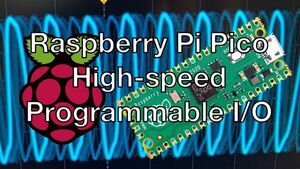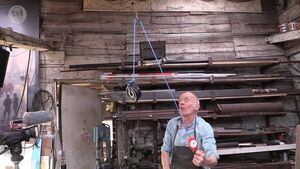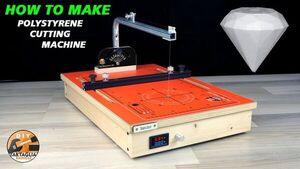2021-04-22 - Nº 312
Editorial
Esta é a Newsletter Nº 312 que se apresenta com o mesmo formato que as anteriores. Se gostar da Newsletter partilhe-a!
Todas as Newsletters encontram-se indexadas no link.
Esta Newsletter tem os seguintes tópicos:
Faz hoje anos que nascia, em 1724, o filósofo alemão, formado em matemática e física Immanuel Kant. Ele publicou a sua História geral da natureza e teoria dos céus em 1755. Esta visão física do universo continha três antecipações importantes para os astrónomos. 1) Ele fez a hipótese da nebulosa antes de Laplace. 2) Ele descreveu a Via Láctea como uma colecção de estrelas em forma de lente que representava apenas um dos muitos "universos-ilha", mais tarde mostrado por Herschel. 3) Ele sugeriu que o atrito das marés diminuiu a rotação da Terra, o que foi confirmado um século depois. Em 1770 tornou-se professor de matemática, mas voltou-se para a metafísica e a lógica em 1797, o campo em que é mais conhecido.
Faz também hoje anos que nascia, em 1789, o engenheiro mecânico e inventor galês [Richard Roberts](Richard Roberts (engineer)). Ele foi responsável pela invenção do primeiro medidor de gás bem-sucedido. Ele foi um dos inventores das primeiras aplainadoras de metal (1817). Roberts também desenvolveu um torno de rosqueamento e máquinas para corte de engrenagens e ranhuras. A mula giratória auto-guiada (1825) que ele inventou foi sua contribuição mais importante para a indústria têxtil, que também fundou na França. Na década de 1830, a sua empresa construiu locomotivas ferroviárias numa das primeiras aplicações do uso de peças trocáveis. Na década de 1840, ele desenvolveu máquinas para fazer padrões de orifícios em pontes e placas de caldeira, automatizadas com cartões perfurados semelhantes ao tear Jacquard.
Faz igualmente hoje anos que nascia, em 1834, o físico francês Gaston Planté. Ele construiu a primeira bateria de armazenamento (1859), que era capaz de fornecer electricidade e ser recarregada várias vezes. Até esta invenção, as baterias existiam desde a descoberta de Alessandro Volta, numa forma que podia ser usada e descarregada apenas uma vez. Planté fez o seu acumulador com uma placa de chumbo, enrolada com um separador de pano de linho, imerso em ácido sulfúrico. Ele tinha apenas um gerador de manivela. A sua bateria teve de esperar que a invenção posterior de dínamos satisfatórios se tornasse útil. A célula foi melhorada por Camille Faure, Sir Joseph Swan e outros. A bateria recarregável teve um uso importante para o telégrafo. Desde que foi adoptada pela primeira vez para uso em automóveis, a bateria de chumbo-ácido continua a ser usada com o mesmo desenho fundamental. Mais tarde, ele investigou a electricidade atmosférica.
Faz também hoje anos que nascia, em 1904, o físico teórico norte-americano J. Robert Oppenheimer. Ele foi director do laboratório de Los Alamos durante o desenvolvimento da bomba atómica (1943-45) e director do Instituto de Estudos Avançados de Princeton (1947-66). As descobertas de Oppenheimer na física incluíram a aproximação de Born-Oppenheimer para funções de ondas moleculares, trabalho na teoria dos electrões e positrons, o processo Oppenheimer-Phillips na fusão nuclear e a primeira previsão de tunelamento quântico. Com seus alunos, ele também fez contribuições importantes para a teoria moderna de estrelas de neutrões e buracos negros, bem como para a mecânica quântica, teoria de campo quântico e as interacções dos raios cósmicos. Como professor e promotor da ciência, ele é lembrado como o pai fundador da escola americana de física teórica que ganhou destaque mundial na década de 1930.
Faz igualmente hoje anos que nascia, em 1919, o químico norte-americano Donald J. Cram. Ele partilhou o Prémio Nobel de Química de 1987 (com Charles J. Pedersen e Jean-Marie Lehn) pela sua criação de moléculas que imitam o comportamento químico de moléculas encontradas em sistemas vivos.
Por fim, faz hoje anos que nascia, em 1929, o matemático britânico de origem libanesa Michael Atiyah. Ele recebeu a Medalha Fields em 1966 principalmente por seu trabalho em topologia. Juntamente com Hirzebruch, ele lançou as bases para a teoria-K topológica, uma ferramenta importante na topologia algébrica, que, informalmente, descreve as maneiras pelas quais os espaços podem ser torcidos. O seu resultado mais conhecido, o teorema do índice Atiyah – Singer, foi provado com Singer em 1963 e é usado na contagem do número de soluções independentes para equações diferenciais. Alguns dos seus trabalhos mais recentes foram inspirados pela física teórica, em particular instantons e monopoles, que são responsáveis por algumas correcções subtis na teoria quântica de campos.
E nesta semana que passou o Drone Ingenuity Mars da NASA é bem-sucedido no primeiro voo histórico. Na passada segunda-feira, o Drone tornou-se a primeira aeronave da história a fazer um voo motorizado e controlado noutro planeta. A equipa Ingenuity do Jet Propulsion Laboratory da agência no sul da Califórnia confirmou o sucesso do voo após receber dados do drone via Perseverance Mars rover da NASA às 6:46 am EDT (3:46 am PDT). A demonstração de voo inicial do Ingenuity foi autónoma - pilotada por sistemas de orientação, navegação e controle a bordo, executando algoritmos desenvolvidos pela equipa do JPL. Como os dados devem ser enviados e devolvidos do Planeta Vermelho ao longo de centenas de milhões de quilómetros usando satélites em órbita e a Deep Space Network da NASA, o Ingenuity não pode ser pilotado com um joystick e seu voo não foi observado da Terra em tempo real. Entretanto o drone já cumpriu com sucesso uma segunda missão de voo.
Também esta semana foi lançada a nova versão do Sistema Operativo da Canonical, o Ubuntu 21.04. Este sistema baseia-se no kernel Linux e na distro Debian. As grande novidades desta versão são a integração nativa com a AD e a certificação do Microsoft SQL Server para ser usado nesta distribuição de Linux. Adicionalmente foram actualizados os mais diversos pacotes de software. Não foi incluído ainda o GNOME 40 nem o GTK4 porque estes são muito recentes e não foi possível na janela de tempo inclui-los sem impacto nas restantes aplicações. Esta versão inclui o Kernel Linux 5.11, um tema "dark" melhorado, utilização do Wayland por omissão e o Python 3.9.
Na Newsletter desta semana apresentamos diversas noticias, artigos científicos, projetos de maker assim como alguns videos interessantes. É apresentada a revista Hackspace Magazine nº43 de Maio.
 João Alves ([email protected])
João Alves ([email protected])
O conteúdo da Newsletter encontra-se sob a licença  Creative Commons Attribution-NonCommercial-ShareAlike 4.0 International License.
Creative Commons Attribution-NonCommercial-ShareAlike 4.0 International License.
Novidades da Semana
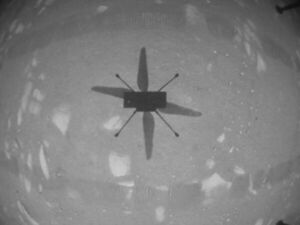
NASA’s Ingenuity Mars Helicopter Succeeds in Historic First Flight
"Monday, NASA’s Ingenuity Mars Helicopter became the first aircraft in history to make a powered, controlled flight on another planet. The Ingenuity team at the agency’s Jet Propulsion Laboratory in Southern California confirmed the flight succeeded after receiving data from the helicopter via NASA’s Perseverance Mars rover at 6:46 a.m. EDT (3:46 a.m. PDT). “Ingenuity is the latest in a long and storied tradition of NASA projects achieving a space exploration goal once thought impossible,” said acting NASA Administrator Steve Jurczyk. “The X-15 was a pathfinder for the space shuttle. Mars Pathfinder and its Sojourner rover did the same for three generations of Mars rovers. We don’t know exactly where Ingenuity will lead us, but today’s results indicate the sky – at least on Mars – may not be the limit.” The solar-powered helicopter first became airborne at 3:34 a.m. EDT (12:34 a.m. PDT) – 12:33 Local Mean Solar Time (Mars time) – a time the Ingenuity team determined would have optimal energy and flight conditions." [...]

Ubuntu 21.04 is here
"Today, Canonical released Ubuntu 21.04 with native Microsoft Active Directory integration, Wayland graphics by default, and a Flutter application development SDK. Separately, Canonical and Microsoft announced performance optimization and joint support for Microsoft SQL Server on Ubuntu. “Native Active Directory integration and certified Microsoft SQL Server on Ubuntu are top priorities for our enterprise customers.” said Mark Shuttleworth, CEO of Canonical. “For developers and innovators, Ubuntu 21.04 delivers Wayland and Flutter for smoother graphics and clean, beautiful, design-led cross-platform development.” Ubuntu has established itself as the enterprise engineering platform of choice, from the desktop to public cloud and microservices, with a wide range of corporate adopters in the finance, automotive, tech and government sectors. “Canonical’s desktop solutions are cost-effective, easy to manage at scale, and simple to integrate with enterprise systems. For our 100,000 police officers, Ubuntu is user-friendly, reliable, and delivers the requisite privacy and security without additional third-party solutions." [...]
Outras Notícias

NVIDIA Sets AI Inference Records, Introduces A30 and A10 GPUs for Enterprise Servers
"NVIDIA today announced that its AI inference platform, newly expanded with NVIDIA® A30 and A10 GPUs for mainstream servers, has achieved record-setting performance across every category on the latest release of MLPerf. MLPerf is the industry’s established benchmark for measuring AI performance across a range of workloads spanning computer vision, medical imaging, recommender systems, speech recognition and natural language processing. Debuting on MLPerf, NVIDIA A30 and A10 GPUs combine high performance with low power consumption to provide enterprises with mainstream options for a broad range of AI inference, training, graphics and traditional enterprise compute workloads. Cisco, Dell Technologies, Hewlett Packard Enterprise, Inspur and Lenovo are expected to integrate the GPUs into their highest volume servers starting this summer. NVIDIA achieved these results taking advantage of the full breadth of the NVIDIA AI platform ― encompassing a wide range of GPUs and AI software, including TensorRT™ and NVIDIA Triton™ Inference Server ― which is deployed by leading enterprises, such as Microsoft, Pinterest, Postmates, T-Mobile, USPS and WeChat. “As AI continues to transform every industry, MLPerf is becoming an even more important tool for companies to make informed decisions on their IT infrastructure investments,” said Ian Buck, general manager and vice president of Accelerated Computing at NVIDIA." [...]

First Automotive-Qualified, Single-Chip Solution for Large, Ultrawide Touch Displays Now Available
"Supporting LCD and OLED displays, Microchip’s latest maXTouch® touchscreen controller reduces integration complexity and cost for ultrawide touch displays up to 45 inches To better meet the need for safe, intuitive and easy-to-use user interfaces within automotive vehicles, designers are continuing to consolidate the vehicle’s cluster, center stack and co-driver displays into very wide screens. Streamlining and simplifying system development for these ultrawide screens often seen in electric vehicles (EVs), advanced driver-assistance systems (ADAS) and premium vehicles, Microchip Technology Inc. (Nasdaq: MCHP) today announced its maXTouch® MXT2912TD-UW touchscreen controller. This is the industry’s first automotive-qualified, single-chip solution that addresses display sizes up to 45 inches with a very wide aspect ratio, supporting liquid-crystal display (LCD) and organic light emitting diode (OLED) display technologies. The MXT2912TD-UW reduces the need for multiple touch controllers within a vehicle’s human machine interface (HMI) display. This single-chip touch controller provides the highest report rate for wide displays and is independent of the display resolution, helping achieve the same smartphone user experience that consumers have come to expect. Also supported by the exceptional signal-to-noise ratio (SNR) intrinsic to maXTouch technology, the MXT2912TD-UW enables detection and tracking of multi-finger touch through thick gloves and a wide variety of overlay materials and thicknesses, even in the presence of moisture." [...]
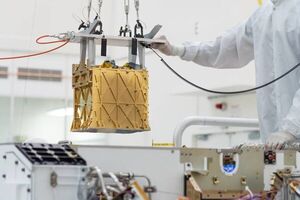
NASA’s Perseverance Mars Rover Extracts First Oxygen from Red Planet
"The growing list of “firsts” for Perseverance, NASA’s newest six-wheeled robot on the Martian surface, includes converting some of the Red Planet’s thin, carbon dioxide-rich atmosphere into oxygen. A toaster-size, experimental instrument aboard Perseverance called the Mars Oxygen In-Situ Resource Utilization Experiment (MOXIE) accomplished the task. The test took place April 20, the 60th Martian day, or sol, since the mission landed Feb. 18. While the technology demonstration is just getting started, it could pave the way for science fiction to become science fact – isolating and storing oxygen on Mars to help power rockets that could lift astronauts off the planet’s surface. Such devices also might one day provide breathable air for astronauts themselves. MOXIE is an exploration technology investigation – as is the Mars Environmental Dynamics Analyzer (MEDA) weather station – and is sponsored by NASA’s Space Technology Mission Directorate (STMD) and Human Exploration and Operations Mission Directorate." [...]
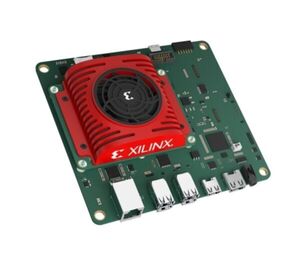
Xilinx Introduces Kria Portfolio of Adaptive System-on-Modules for Accelerating Innovation and AI Applications at the Edge
"Production-ready embedded boards and low-cost developer kit accelerate design cycles for rapid deployment; initial products target vision AI applications in smart cities and factories Xilinx, Inc. today introduced the Kria™ portfolio of adaptive system-on-modules (SOMs), production-ready small form factor embedded boards that enable rapid deployment in edge-based applications. Coupled with a complete software stack and pre-built, production-grade accelerated applications, Kria adaptive SOMs are a new method of bringing adaptive computing to AI and software developers. The first product available in the Kria SOM portfolio, the Kria K26 SOM, specifically targets vision AI applications in smart cities and smart factories. The Xilinx® SOM roadmap includes a full range of products, from cost-optimized SOMs for size and cost-constrained applications to higher performance modules that will offer developers more real-time compute capability per watt. “Xilinx’s entrance into the burgeoning SOM market builds on our evolution beyond the chip-level business that began with our Alveo boards for the data center and continues with the introduction of complete board-level solutions for embedded systems,” said Kirk Saban, vice president, Product and Platform Marketing at Xilinx. “The Kria SOM portfolio expands our market reach into more edge applications and will make the power of adaptable hardware accessible to millions of software and AI developers.” According to industry reports, the SOM market is growing at roughly 11 percent annually and total market revenue is expected to reach $2.3 billion by 20251." [...]

Renesas RX MCU Becomes World’s First General-Purpose MCU to Obtain CMVP Level 3 Certification Under NIST FIPS 140-2 Security Standard
"By Using Certified RX MCUs, Customers Can Easily Develop Devices Meeting Security Requirements Renesas Electronics Corporation (TSE:6723), a premier supplier of advanced semiconductor solutions, today announced that its 32-bit RX65N microcontroller (MCU) has achieved Cryptographic Module Validation Program (CMVP) (Note 1) Level 3 certification under the FIPS 140-2 security standard by the National Institute of Standards and Technology (NIST). The RX65N is the world’s first general-purpose MCU to obtain level 3 certification (Note 2). The FIPS 140 standard is an essential security requirement for applications used by government agencies, financial institutions, public facilities, and infrastructure, and it is becoming a de facto standard for security worldwide. Level 3 is a high security level with tamper detection/response and identity-based authentication mechanisms for devices used to handle financial information such as hardware security modules (HSMs) and smart cards. Using the certified RX65N MCU will make it easier for customers to develop devices with robust and trustworthy security functions, which will contribute to a reduction in the development workload and reduced overall security risks. “As more IoT devices gain network connectivity, the danger of malicious threats such as data leaks, data tampering, and spoofing grows, making security more important than ever,” said Sakae Ito, Vice President of IoT Platform Business Division at Renesas." [...]
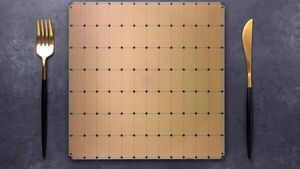
One Giant Leap For Waferscale AI
"Remember how, a few years ago, the chatter was that waferscale systems wouldn’t stand a chance? The expense, complexity, software stack required, and litany of other barriers went on. Yet Cerebras Systems propelled ahead anyway. While they’re not replacing GPUs, CPUs, or even clearly outpacing the other AI chip upstarts quite yet, things do appear to be looking up for Cerebras. And on the heels of some recent wins in national labs and pharma companies, including GlaxoSmithKline, waferscale AI systems maker, Cerebras, is unveiling its new, second machine, the CS-2. A generation-hopping die shrink, microarchitecture tweaks, big memory and memory bandwidth improvements, and what appears to be a pretty plug-and-play approach to moving models from a CS-1 and even GPUs compiler-wise are all noteworthy." [...]

As Artemis Moves Forward, NASA Picks SpaceX to Land Next Americans on Moon
"NASA is getting ready to send astronauts to explore more of the Moon as part of the Artemis program, and the agency has selected SpaceX to continue development of the first commercial human lander that will safely carry the next two American astronauts to the lunar surface. At least one of those astronauts will make history as the first woman on the Moon. Another goal of the Artemis program includes landing the first person of color on the lunar surface. The agency’s powerful Space Launch System rocket will launch four astronauts aboard the Orion spacecraft for their multi-day journey to lunar orbit. There, two crew members will transfer to the SpaceX human landing system (HLS) for the final leg of their journey to the surface of the Moon. After approximately a week exploring the surface, they will board the lander for their short trip back to orbit where they will return to Orion and their colleagues before heading back to Earth." [...]

Blue Origin aces 'astronaut rehearsal' New Shepard test flight
"The company launched the 15th uncrewed test flight of its reusable suborbital vehicle New Shepard today (April 14), blasting off from a West Texas launchpad at 12:50 p.m. EDT (1650 GMT; 11:50 a.m. local time). Originally targeting launch at 11:15 a.m. EDT (1515 GMT; 10:15 a.m. local time), the flight was delayed about an hour and a half for final checks. The mission, dubbed NS-15, was meant to mimic what will occur once Blue Origin starts flying passengers. Before the flight, two company employees entered the capsule to practice the procedures that future astronauts will follow before launch; the faux-astronauts left the vehicle for the flight proper, then returned to the capsule to practice post-landing procedures. Today's mission "is really a critical step in our march towards first human flight," Ariane Cornell, Blue Origin's director of astronaut and orbital sales, said during the company's launch webcast. During that webcast, Cornell and fellow launch commentator Patrick Zeitouni gave a virtual tour of the West Texas facility, which the company has named Launch Site One." [...]
Ciência e Tecnologia
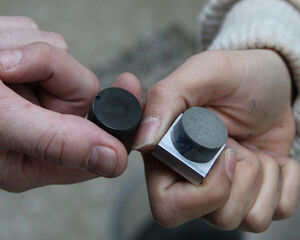
Electrifying cement with nanocarbon black
"A collaboration between MIT and CNRS has yielded a cement that conducts electricity and generates heat. Since its invention several millennia ago, concrete has become instrumental to the advancement of civilization, finding use in countless construction applications — from bridges to buildings. And yet, despite centuries of innovation, its function has remained primarily structural. A multiyear effort by MIT Concrete Sustainability Hub (CSHub) researchers, in collaboration with the French National Center for Scientific Research (CNRS), has aimed to change that. Their collaboration promises to make concrete more sustainable by adding novel functionalities — namely, electron conductivity. Electron conductivity would permit the use of concrete for a variety of new applications, ranging from self-heating to energy storage." [...]

New conductive polymer ink opens for next-generation printed electronics
"Researchers at Linköping University, Sweden, have developed a stable high-conductivity polymer ink. The advance paves the way for innovative printed electronics with high energy efficiency. The results have been published in Nature Communications. Electrically conducting polymers have made possible the development of flexible and lightweight electronic components such as organic biosensors, solar cells, light-emitting diodes, transistors, and batteries. The electrical properties of the conducting polymers can be tuned using a method known as “doping”. In this method, various dopant molecules are added to the polymer to change its properties." [...]

Brain-on-a-chip would need little training
"A neural network that mimics the biology of the brain can be loaded onto a microchip for faster and more efficient artificial intelligence. A biomimicking "spiking" neural network on a microchip has enabled KAUST researchers to lay the foundation for developing more efficient hardware-based artificial intelligence computing systems. Artificial intelligence technology is developing rapidly, with an explosion of new applications across advanced automation, data mining and interpretation, healthcare and marketing, to name a few. Such systems are based on a mathematical artificial neural network (ANN) composed of layers of decision-making nodes. Labeled data is first fed into the system to "train" the model to respond a certain way, then the decision-making rules are locked in and the model is put into service on standard computing hardware. While this method works, it is a clunky approximation of the far more complex, powerful and efficient neural network that actually makes up our brains." [...]

Primordial black holes could explain dark matter, galaxy growth and more
"One day a little more than five years ago, Ely Kovetz was having lunch with his colleagues at Johns Hopkins University in Baltimore, discussing a tantalizing rumor. Like many in the physics community, Kovetz had heard the buzz about a possible signal from a newly operational US physics observatory. The observatory was designed to pick up disturbances in the fabric of spacetime, ripples created by, among other things, black holes crashing into each other. Most intriguingly, the signal appeared to have been created by massive objects, far heavier than anyone expected. That pointed at some eyebrow-raising possibilities. “The first thought in everybody’s mind was, ‘What?" [...]
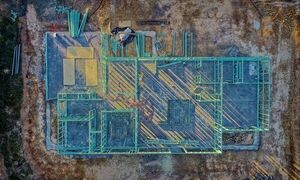
Moving towards a circular economy for more sustainable housing
"RMIT urban researchers will lead a pioneering project examining how Australia’s housing sector can transition to a circular economy for more sustainable homes. Every year, over 20 million tonnes of waste from the construction industry is sent to landfills. In addition, the changing climate demands more action towards sustainable housing but this is often held back due to the high costs of innovation, market failure and insufficient expertise. A new project led by RMIT University will investigate how the construction sector can transition to a circular economy – an approach that seeks to eliminate waste and keep resources in a continually flowing loop. RMIT’s Professor Ralphe Horne will lead the Australian Housing and Urban Research Institute-funded Inquiry Programme to establish an evidence base and framework for housing in a circular economy, in collaboration with the University of South Australia, University of New South Wales, University of Wollongong and The University of Adelaide. “For the last few decades, Australian housing has been shifting towards a more sustainable footing,” Horne said." [...]
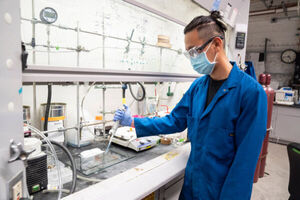
To Design Truly Compostable Plastic, Scientists Take Cues From Nature
"New technology developed by Berkeley Lab and UC Berkeley could steer plastics away from landfills and oceans – and into your backyard compost bin Despite our efforts to sort and recycle, less than 9% of plastic gets recycled in the U.S., and most ends up in landfill or the environment. Biodegradable plastic bags and containers could help, but if they’re not properly sorted, they can contaminate otherwise recyclable #1 and #2 plastics. What’s worse, most biodegradable plastics take months to break down, and when they finally do, they form microplastics – tiny bits of plastic that can end up in oceans and animals’ bodies – including our own. Now, as reported today in the journal Nature, scientists at the Department of Energy’s Lawrence Berkeley National Laboratory (Berkeley Lab) and UC Berkeley have designed an enzyme-activated compostable plastic that could diminish microplastics pollution, and holds great promise for plastics upcycling. The material can be broken down to its building blocks – small individual molecules called monomers – and then reformed into a new compostable plastic product. “In the wild, enzymes are what nature uses to break things down – and even when we die, enzymes cause our bodies to decompose naturally." [...]

Advanced Light Source Upgrade Project Achieves Major Milestone
"Berkeley Lab’s biggest project in 30 years one step closer to start of construction; upgrade could help advance next-gen technologies for clean energy, the environment, and health The Advanced Light Source (ALS), a scientific user facility at the Department of Energy’s (DOE) Lawrence Berkeley National Laboratory (Berkeley Lab), has received federal approval for the budget, schedule, and technical scope for a major upgrade project that will boost the brightness of its X-ray beams at least a hundredfold. In addition to brighter X-ray beams, the ALS Upgrade (ALS-U) project will enable the ALS to deliver light with a more ordered “coherent” structure – like evenly spaced ripples in a pond – that will better reveal nanoscale (billionths of a meter) details in complex chemical reactions and in new materials. “For nearly three decades, the ALS has developed innovative X-ray tools and used these to support a world-renowned portfolio of user science and collaboration,” said ALS Director Steve Kevan. “The ALS upgrade will allow us to vastly sharpen our tools and to accelerate that work for several more decades as we learn to design chemical, material, and biological systems that will solve the pressing energy and environmental challenges we face.” This latest approval by DOE, known as Critical Decision 2 or CD-2, marks the completion of the preliminary design stage of the project. It also authorizes a $590 million budget and funding profile for the project, and outlines the scope and schedule. “I am proud of the talented engineers, scientists, technicians, and support staff who helped the Lab achieve CD-2 approval for the Advanced Light Source Upgrade project during these challenging times." [...]
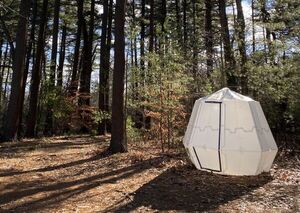
Bistable pop-up structures inspired by origami
"Next-generation inflatable buildings maintain their shape without constant input of pressure In 2016, an inflatable arch wreaked havoc at the Tour de France bicycle race when it deflated and collapsed on a cyclist, throwing him from his bike and delaying the race while officials scrambled to clear the debris from the road. Officials blamed a passing spectator’s wayward belt buckle for the arch’s collapse, but the real culprit was physics. Today’s inflatable structures, used for everything from field hospitals to sporting complexes, are monostable, meaning they need a constant input of pressure in order to maintain their inflated state. Lose that pressure and the structure returns to its only stable form — flat. But what if these structures had more than one stable state? What if the arch was just as stable inflated as it is flat on the ground?" [...]
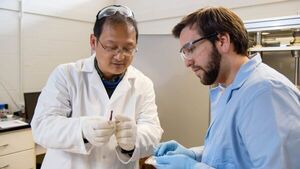
Clemson physicist’s thermoelectric material discovery sets stage for new forms of electric power in the future
"Thermoelectrics directly convert heat into electricity and power a wide array of items — from NASA’s Perseverance rover currently exploring Mars to travel coolers that chill beverages. A Clemson University physicist has joined forces with collaborators from China and Denmark to create a new and potentially paradigm-shifting high-performance thermoelectric compound. A material’s atomic structure, which is how atoms arrange themselves in space and time, determines its properties. Typically, solids are crystalline or amorphous. In crystals, atoms are in an orderly and symmetrical pattern. Amorphous materials have randomly distributed atoms." [...]

New material could better protect soldiers, athletes and motorists
"Soldiers, athletes, and motorists could lead safer lives thanks to a new process that could lead to more efficient and re-useable protection from shock and impact, explosion, and vibration, according to a new study. Pressurised insertion of aqueous solutions into water-repellent nanoporous materials, such as zeolites and metal-organic frameworks, could help to create high-performance energy absorbing systems. An international research team experimented with hydrothermally stable zeolitic imidazolate frameworks (ZIFs) with a ‘hydrophobic’ cage-like molecular structure – finding that such systems are remarkably effective energy absorbers at realistic, high-rate loading conditions, and this phenomenon is associated with the water clustering and mobility in nanocages. Researchers from the Universities of Birmingham and Oxford, together with Ghent University, Belgium, published their findings today in Nature Materials. Dr Yueting Sun, Lecturer in Engineering at the University of Birmingham, commented: “Rubber is widely used for shock absorption nowadays, but the process we have discovered creates a material that can absorb more mechanical energy per gram with very good reusability due to its unique nanoscale mechanism. “The material has great significance for vehicle crash safety for both occupants and pedestrians, military armoured vehicles and infrastructures as well as human body protection." [...]
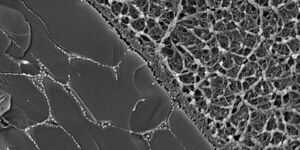
Inspired by nature, the research to develop a new load-bearing material
"Engineers have developed a material that mimics human cartilage – the body’s shock absorbing and lubrication system, and it could herald the development of a new generation of lightweight bearings. Cartilage is a soft fibrous tissue found around joints which provides protection from the compressive loading generated by walking, running or lifting. It also provides a protective, lubricating layer allowing bones to pass over one another in a frictionless way. For years, scientists have been trying to create a synthetic material with the properties of cartilage. To date, they have had mixed results. But in a paper published in the journal Applied Polymer Materials, researchers at the University of Leeds and Imperial College London have announced that they have created a material that functions like cartilage." [...]

Stanford engineers find ankle exoskeletons can greatly increase walking speed
"In lab tests, researchers found that an optimized ankle exoskeleton system increased participants’ walking speed by about 40 percent compared with their regular speed. The researchers hope someday to help restore walking speed in older adults. Being unable to walk quickly can be frustrating and problematic, but it is a common issue, especially as people age. Noting the pervasiveness of slower-than-desired walking, engineers at Stanford University have tested how well a prototype exoskeleton system they have developed – which attaches around the shin and into a running shoe – increased the self-selected walking speed of people in an experimental setting. The exoskeleton is externally powered by motors and controlled by an algorithm. When the researchers optimized it for speed, participants walked, on average, 42 percent faster than when they were wearing normal shoes and no exoskeleton." [...]
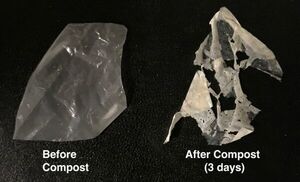
New process breaks down biodegradable plastics faster
"Invention could solve waste management challenges on the battlefield. With Army funding, scientists invented a way to make compostable plastics break down within a few weeks with just heat and water. This advance will potentially solve waste management challenges at forward operating bases and offer additional technological advances for American Soldiers. The new process, developed by researchers at University of California, Berkeley and the University of Massachusetts Amherst, involves embedding polyester-eating enzymes in the plastic as it's made. When exposed to heat and water, an enzyme shrugs off its polymer shroud and starts chomping the plastic polymer into its building blocks — in the case of biodegradable plastics, which are made primarily of the polyester known as polylactic acid, or PLA, it reduces it to lactic acid that can feed the soil microbes in compost. The polymer wrapping also degrades." [...]
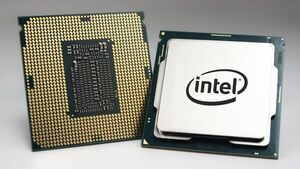
A tool for navigating complex computer instructions
"We’ve come a long way since Intel introduced the first microprocessor in 1971. Their 4004 held 2,300 transistors, with today’s best chips exceeding billions, harnessing more and more power since their birth. But every time Intel releases a new computer chip, it’s a costly investment, as they need to add new instructions of computer programs that tell it which data to process and how to process it. These are things a user doesn’t see, but that power tasks like image processing, machine learning, and video coding. However, the programs that process this new information, called compilers, can’t always use these more complex instructions. The burden then often falls on expert developers to do more of the work by hand, and to perform error-prone and cumbersome tasks like writing assembly code." [...]

A Hacker's Nightmare: Programmable Chips Secured by Chaos
"A complex network of randomly interconnected logic gates creates conditions that could thwart hackers Not all chaos is bad. In the case of programmable chips, chaos can be harnessed to create a unique digital identifier. Think of it as a fingerprint—only, instead of distinctive loops and whorls on human skin, this is about the unique physical variations present in silicon chips. These minute differences, often at an atomic level, vary from chip to chip, even if they are manufactured together. The physical variations can be amplified using a technology called physically unclonable functions (PUFs) to create a signature that is unique to a specific chip. By putting many PUF cells together, it is possible to create a random number of an arbitrary length." [...]

Rapid characterisation of carbon 2D materials
"Scientists at NPL use Nuclear Magnetic Resonance Proton Relaxation to probe the surface chemistry of nanomaterial dispersions Industrial applications of nanomaterials commonly require their dispersion in solvents to embed them in final products. Examples of applications include battery electrodes, composite reinforcement, printed electronics, and many more. As nanomaterials exhibit a high surface-to-mass ratio, their surface properties, in particular surface chemistry, govern their interactions with the external environment. Therefore, these must be carefully characterised to optimise product performance. However, characterising nanomaterial dispersions is difficult to achieve because of the small length-scales, as well as the use of liquids, which are incompatible with the vacuum conditions employed in many ex-situ techniques. These typical measurement methods can be costly and time consuming and the pre-processing steps often employed to remove nanomaterials from liquid can potentially alter their material properties." [...]
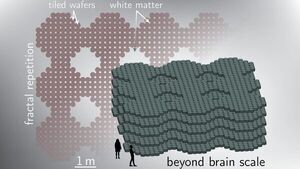
Combining Light, Superconductors Could Boost AI Capabilities
"As artificial intelligence has attracted broad interest, researchers are focused on understanding how the brain accomplishes cognition so they can construct artificial systems with general intelligence comparable to humans’ intelligence. Many have approached this challenge by using conventional silicon microelectronics in conjunction with light. However, the fabrication of silicon chips with electronic and photonic circuit elements is difficult for many physical and practical reasons related to the materials used for the components. In Applied Physics Letters, by AIP Publishing, researchers at the National Institute of Standards and Technology propose an approach to large-scale artificial intelligence that focuses on integrating photonic components with superconducting electronics rather than semiconducting electronics. “We argue that by operating at low temperature and using superconducting electronic circuits, single-photon detectors, and silicon light sources, we will open a path toward rich computational functionality and scalable fabrication,” said author Jeffrey Shainline. Using light for communication in conjunction with complex electronic circuits for computation could enable artificial cognitive systems of scale and functionality beyond what can be achieved with either light or electronics alone." [...]
Low-Loss Silicon Nitride Served up on a Wafer
"Scientists in Switzerland have demonstrated a new method for manufacturing photonic integrated circuits from very low-loss silicon nitride in high-yield wafers. The researchers say the technology could allow frequency combs and other nonlinear devices to be mass-produced using conventional semiconductor fabrication techniques (Nat. Commun., doi: 10.1038/s41467-021-21973-z). Microcombs and materials Best known for underpinning modern electronics, straightforward silicon has also played a role in integrated photonics. It has been deployed widely, for example, in the form of data center interconnects. But silicon has limitations when it comes to making nonlinear devices such as micro-scale frequency combs, or “microcombs.” These tiny ring-shaped resonators exploit the Kerr effect, a change in refractive index as light’s intensity varies." [...]
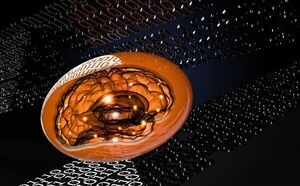
Helpful, engineered 'living' machines in the future?
"New soft, responsive metamaterial holds potential for wide variety of societal benefits Engineered, autonomous machines combined with artificial intelligence have long been a staple of science fiction, and often in the role of villain like the Cylons in the "Battlestar Galactica" reboot, creatures composed of biological and engineered materials. But what if these autonomous soft machines were ... helpful? This is the vision of a team of Penn State and U.S. Air Force researchers, outlined in a recent paper in Nature Communications. These researchers produced a soft, mechanical metamaterial that can “think” about how forces are applied to it and respond via programmed reactions. This platform holds great potential for a variety of applications from medical treatments to improving the environment. "We created soft, mechanical metamaterials with flexible, conductive polymer networks that can compute all digital logic computations,” said Ryan Harne, James F. Will Career Development Associate Professor, Penn State." [...]
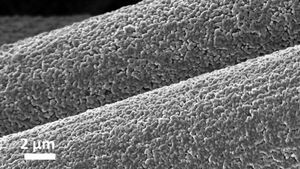
Aluminum-anode batteries offer sustainable alternative
"The cost of harvesting solar energy has dropped so much in recent years that it’s giving traditional energy sources a run for their money. However, the challenges of energy storage – which require the capacity to bank an intermittent and seasonally variable supply of solar energy – have kept the technology from being economically competitive. Cornell researchers led by Lynden Archer, the Joseph Silbert Dean of Engineering and the James A. Friend Family Distinguished Professor of Engineering, have been exploring the use of low-cost materials to create rechargeable batteries that will make energy storage more affordable. These materials could also provide a safer and more environmentally friendly alternative to lithium-ion batteries, which currently dominate the market but are slow to charge and have a knack for catching fire. The group previously demonstrated the potential of zinc-anode batteries." [...]
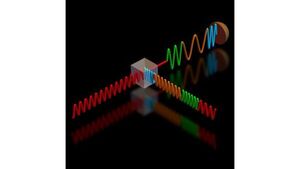
Boosting Fiber Optics Communications with Advanced Quantum-Enhanced Receiver
"Fiber optic technology is the holy grail of high-speed, long-distance telecommunications. Still, with the continuing exponential growth of internet traffic, researchers are warning of a capacity crunch. In AVS Quantum Science, by AIP Publishing, researchers from the National Institute of Standards and Technology and the University of Maryland show how quantum-enhanced receivers could play a critical role in addressing this challenge. The scientists developed a method to enhance receivers based on quantum physics properties to dramatically increase network performance while significantly reducing the error bit rate (EBR) and energy consumption. Fiber optic technology relies on receivers to detect optical signals and convert them into electrical signals. The conventional detection process, largely as a result of random light fluctuations, produces “shot noise,” which decreases detection ability and increases EBR." [...]

Understanding Interfaces of Hybrid Materials with Machine Learning
"Using machine learning methods, researchers at TU Graz can predict the structure formation of functionalized molecules at the interfaces of hybrid materials. Now they have also succeeded in looking behind the driving forces of this structure formation. The production of nanomaterials involves self-assembly processes of functionalized (organic) molecules on inorganic surfaces. This combination of organic and inorganic components is essential for applications in organic electronics and other areas of nanotechnology. Until now, certain desired surface properties were often achieved on a trial-and-error basis. Molecules were chemically modified until the best result for the desired surface property was found." [...]
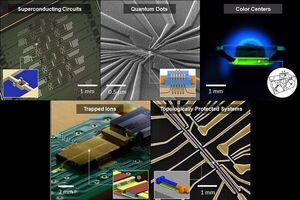
Materials advances are key to development of quantum hardware
"A new study outlines the need for materials advances in the hardware that goes into making quantum computers if these futuristic devices are to surpass the abilities of the computers we use today. The study(link is external), published in the journal Science by an international team, surveyed the state of research on quantum computing hardware with the goal of illustrating the challenges and opportunities facing scientists and engineers. While conventional computers encode "bits" of information as ones and zeroes, quantum computers breeze past this binary arrangement by creating "qubits," which can be complex, continuous quantities. Storing and manipulating information in this exotic form – and ultimately reaching "quantum advantage" where quantum computers do things that conventional computers cannot – requires sophisticated control of the underlying materials. “There has been an explosion in developing quantum technologies over the last 20 years,” said Nathalie de Leon, assistant professor of electrical and computer engineering at Princeton University and the lead author of the paper, “culminating in current efforts to show quantum advantage for a variety of tasks, from computing and simulation to networking and sensing.” Until recently, most of this work has aimed to demonstrate proof-of-principle quantum devices and processors, de Leon said, but now the field is poised to address real-world challenges. “Just as classical computing hardware became an enormous field in materials science and engineering in the last century, I think the quantum technologies field is now ripe for a new approach, where materials scientists, chemists, device engineers and other scientists and engineers can productively bring their expertise to bear on the problem.” The paper is a call to scientists who study materials to turn to the challenge of developing hardware for quantum computing, said Hanhee Paik(link is external), corresponding author and a research staff member at IBM Quantum(link is external)." [...]

Uniquely sharp X-ray view
"Researchers at the Paul Scherrer Institute PSI have succeeded for the first time in looking inside materials using the method of transient grating spectroscopy with ultrafast X-rays at SwissFEL. The experiment at PSI is a milestone in observing processes in the world of atoms. The researchers are publishing their research results today in the journal Nature Photonics. The structures on microchips are becoming ever tinier; hard disks write entire encyclopedias on magnetic disks the size of a fingernail. Many technologies are currently breaking through the boundaries of classical physics. But in the nanoworld, other laws apply – those of quantum physics." [...]
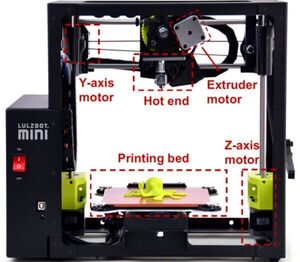
Study: ‘Fingerprint’ for 3D printer accurate 92% of time
"University at Buffalo researchers identify machines by their unique ‘hot end,’ could aid intellectual property, security 3D printing is transforming everything from fashion and health care to transportation and toys. But this rapidly evolving technology, also known as additive manufacturing, can threaten national security and intellectual property rights. To reduce illicit use of 3D printers, Zhanpeng Jin, PhD, associate professor in the Department of Computer Science and Engineering at the University at Buffalo, is developing a way to track the origin of 3D-printed items. His concern was that, as long as people have the digital design for an item, which can be downloaded from the internet, sometimes as open-source material, people can print out anything they want, which can range from computer parts and toys to fully functional handguns and assault rifles. “So, what would be the best way to protect our intellectual property from someone else printing the same design using their own printer?” says Jin. “We wanted to find something internal." [...]
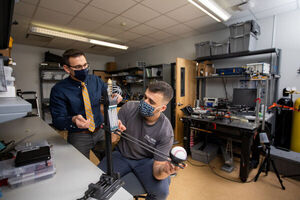
NAU mechanical engineers develop new high-performance artificial muscle technology
"In the field of robotics, researchers are continually looking for the fastest, strongest, most efficient and lowest-cost ways to actuate, or enable, robots to make the movements needed to carry out their intended functions. The quest for new and better actuation technologies and “soft” robotics is often based on principles of biomimetics, in which machine components are designed to mimic the movement of human muscles—and ideally, to outperform them. Despite the performance of actuators like electric motors and hydraulic pistons, their rigid form limits how they can be deployed. As robots transition to more biological forms and as people ask for more biomimetic prostheses, actuators need to evolve. Associate professor and alumnus Michael Shafer and professor Heidi Feigenbaum of Northern Arizona University’s Department of Mechanical Engineering, along with graduate student researcher Diego Higueras-Ruiz, published a paper in Science Robotics presenting a new, high-performance artificial muscle technology they developed in NAU’s Dynamic Active Systems Laboratory. The paper, titled “Cavatappi artificial muscles from drawing, twisting, and coiling polymer tubes,” details how the new technology enables more human-like motion due to its flexibility and adaptability, but outperforms human skeletal muscle in several metrics." [...]

Transparent nanolayers for more solar power
"Nanostructured material and a new cell design pave the way for the production of silicon solar cells with more than 26 percent efficiency There is no cheaper way to generate electricity today than with the sun. Power plants are currently being built in sunny locations that will supply solar electricity for less than two cents per kilowatt hour. Solar cells available on the market based on crystalline silicon make this possible with efficiencies of up to 23 percent. Therefore they hold a global market share of around 95 percent. With even higher efficiencies of more than 26 percent, costs could fall further. An international working group led by photovoltaics researchers from Forschungszentrum Jülich now plan to reach this goal with a nanostructured, transparent material for the front of solar cells and a sophisticated design." [...]

Fast radio bursts shown to include lower frequency radio waves than previously detected
"Since fast radio bursts (FRBs) were first discovered over a decade ago, scientists have puzzled over what could be generating these intense flashes of radio waves from outside of our galaxy. In a gradual process of elimination, the field of possible explanations has narrowed as new pieces of information are gathered about FRBs – how long they last, the frequencies of the radio waves detected, and so on. Now, a team led by McGill University researchers and members of Canada’s CHIME Fast Radio Burst collaboration has established that FRBs include radio waves at frequencies lower than ever detected before, a discovery that redraws the boundaries for theoretical astrophysicists trying to put their finger on the source of FRBs. “We detected fast radio bursts down to 110 MHz where before these bursts were only known to exist down to 300 MHz,” explained Ziggy Pleunis, a postdoctoral researcher in McGill’s Department of Physics and lead author of the research recently published in The Astrophysical Journal Letters. “This tells us that the region around the source of the bursts must be transparent to low-frequency emission, whereas some theories suggested that all low-frequency emission would be absorbed right away and could never be detected.” The study focussed on an FRB source first detected in 2018 by the CHIME radio telescope in British Columbia. Known as FRB 20180916B, the source has attracted particular attention because of its relative proximity to Earth and the fact that it emits FRBs at regular intervals." [...]

Water and quantum magnets share critical physics
"Water can freeze from liquid to solid ice or boil into a gas. In the kitchen these “phase transitions” aren’t smooth, but their discontinuous nature is smoothed out at high pressure. An international team of physicists led by EPFL has now discovered the same behavior in certain quantum magnets, which may have consequences for the technology of qubits. In physics, things exist in “phases”, such as solid, liquid, gas. When something crosses from one phase to another, we talk about a “phase transition” – think about water boiling into steam, turning from liquid to gas. In our kitchens water boils at 100oC, and its density changes dramatically, making a discontinuous jump from liquid to gas." [...]

Tailing new ideas
"MechE’s Aaron Johnson’s Robomechanics Lab is looking to nature for robotic tail designs that make orientation tasks easier for moving robots. From lizards to kangaroos, many animals with tails possess an agility that allows them to turn or self-right after a foot slip. Cheetahs demonstrate tremendous precision and maneuverability at high speeds due, in part, to their tails. Translating this performance to robots would allow them to move more easily through natural terrain. However, adding a tail to a robot carries disadvantages like increased mass, high inertia, and a higher energy cost. Researchers at Carnegie Mellon University’s Robomechanics Lab, in collaboration with the University of Cape Town, have found ways to overcome these challenges inspired by the cheetah’s tail." [...]
Documentação
A documentação é parte essencial do processo de aprendizagem e a Internet além de artigos interessantes de explorar também tem alguma documentação em formato PDF interessante de ler. Todos os links aqui apresentados são para conteúdo disponibilizado livremente pelo editor do livro.
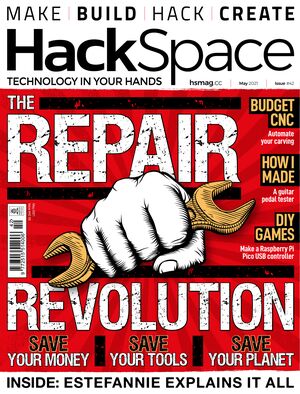
HackSpace magazine #42
"What do you do when something breaks – do you fix it, or do you throw it away and replace it with something new and cheap? We reckon we know the answer. Join us as we pay tribute to the makers keeping good old stuff in working order. - Find out how one maker hacked Google for her own ends - The prettiest PCBs ever committed to silicon - Restoring a lathe to satisfying shininess - Our pick of makery things to do with mason jars - A ridiculously over-the-top DIY fuzz pedal - … and loads more" [...]
Projetos Maker
Diversos Projetos interessantes.
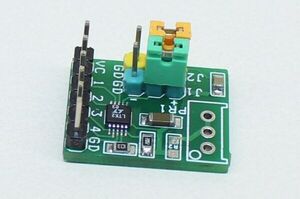
Multiphase Oscillator with 40% Spread Spectrum Frequency Modulation and 250Khz Output Frequency
"This is a precision, low power, and easy-to-use oscillator that provides multiphase outputs. The output frequency of the project is set to 250Khz, with 40% spread spectrum. The oscillator frequency can be set by resistor R1, and the spread spectrum can be changed using R3. The master oscillator is controlled by the RSET resistor R1 and has a range of 100khz to 20Mhz. In order to accommodate a wider output frequency range, a programable divider, (divide by 1, 10, 100) is included and can be set using jumper J1. The integrated programmable multiphase circuit provides either 2, 3, or 4 phase waveforms." [...]
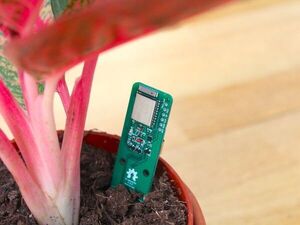
b-parasite - An Open Source BLE Soil Moisture Sensor
"b-parasite is an ultra low power, open source Bluetooth Low Energy (BLE) soil moisture and ambient temperature/humidity sensor. Features - Soil moisture sensor. I wrote about how capacitive soil moisture sensors works on this Twitter thread, based on this great post on wemakethings.net - Air temperature and humidity sensor using a Sensirion's SHTC3 - Powered by a common CR2032 coin cell, with a battery life of possibly over a year - see "Battery Life" below - Open hardware and open source design" [...]
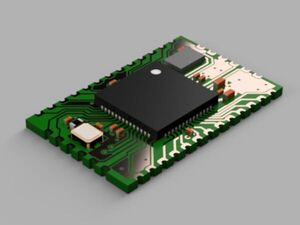
RP2040 Module
"Hand solderable RP2040 for smaller DIY designs. The RP2040, is a cheap dual-core cortex m0+ MCU and has excellent software support! The RPI PICO is perfect for DIY projects, but its humongous size, makes it not ideal for slimmer projects. This RP2040 Module should decrease the spacing a bit :) It measures 11.5 mm wide times 18mm long. That's quite small for a handsolderable device :) smaller then 0.5" x 0.7". " [...]
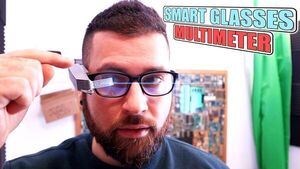
DIY Smartglasses
"This is my first version of a smart-glasses multimeter. Is not the most unique and best look design, but this is yet a first version. I’m pretty sure I will improve it in the future. Anyway, inside the 3D printed case, we have a custom-made PCB that I will show you later, a Bluetooth module, a small LiPo battery and a very small OLED display. The difficult part was to get the text from the OLED display to focus near the eye, and for that the solution was to place the screen at the far back of the case, then use a lens to make the text bigger and then project it towards the eye. So, I will show you the PCB that I’ve made, the problems I had, show you what components we need and how to solder each one and in which order, then we make some tests and show you some results." [...]

Reverse-engineering a vintage comparator chip
"I recently saw an interesting die photo of an unknown chip on Twitter, so I did some analysis of it. Looking at the circuitry inside, the chip appears to be four comparators, probably in the ECL (Emitter Coupled Logic) family. This is a quick blog post to summarize my investigation. The die photo below shows the chip under the microscope. Regions of the silicon appear pink, blue, or yellow, depending on how the silicon was doped. The speckled regions are the metal layer on top of the silicon, wiring the circuitry together." [...]
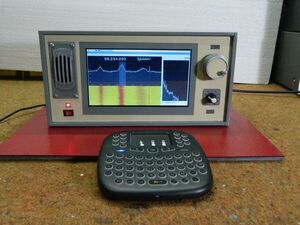
DIY SDR DSP Radio with Raspberry Pi and RTLSDR Dongle
"The radio presented above is capable of receiving the entire spectrum, from 500 kHz to 2 Gigahertz. Software-defined radio (SDR) is a radio communication system where components that have been traditionally implemented in hardware (e.g. mixers, filters, amplifiers, modulators/demodulators, detectors, etc.) are instead implemented by means of software on a personal computer or embedded system. The radio presented in the video above is capable of receiving the entire spectrum, from 500 kHz to 2 Gigahertz. It can decode all digital and analog radio signals." [...]
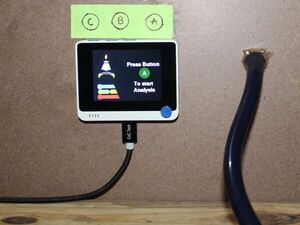
Smart Stethoscope Powered by Edge Impulse
"A digital stethoscope that auscultates and detects abnormalities in the respiratory system using tinyML at the edge. Story As the 2nd wave of covid unfolds throughout the world, sustaining through the pandemic has become an everyday challenge. Due to the steep rise in cases, the healthcare industry continues to evolve and is adopting telemedicine to facilitate the accessibility of remote health care services. But using telemedicine we can only diagnose common diseases as no physical examination is possible, which may increase the number of wrong diagnoses. A quite common symptom of covid-19 in the Indian population is the development of respiratory abnormalities, for which Physical inspection is a mandatory process for proper diagnosis. What if the stethoscope could reveal insights on our health condition just by listen and analyzing the lung sounds at the edge !?" [...]

Line Follower Robot using Pico
"Raspberry Pi Pico Projects Concepts of Line Follower The concept of working of line follower is related to light. We use here the behavior of light at ablack and white surfaces. When light falls on a white surface it is almost fully reflected and in the case of ablack surface light is completely absorbed. This behavior of light is used in building a line follower robot. In this Pi Pico-based line follower robot, we have used IR Transmitters and IR receivers also called photodiodes. They are used for sending and receiving light." [...]
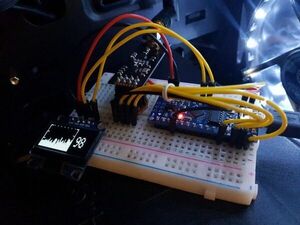
How to Make 2.4 GHz band Scanner With NRF24L01
"Story In this project, we will build a 2.4GHz Wlan scanner using the nRF24L01 radio board. In this project, the output delivers all the interference and information in the scanned area in the form of ASCII codes. In the project of making this scanner, we will use Arduino Nano as a processor. In the second part of this project, we will add an OLED display and display the scanned values in graphs and graphs. With the nRF24 module, we can scan and view the entire 2.4GHz network. This helps us to check the status of the signals in the network." [...]

Very low power temp and humidity monitor with min and max
"A very low power consumption rechargeable temperature and humidity monitor that can run off a rechargeable battery for 12 days or more. Story I needed a temperature and humidity sensor that would show maximum and minimum levels recorded so that I could monitor the levels in my greenhouse. I do not have any power in the greenhouse so the aim was to reduce power consumption as much as possible so that it could run on a rechargeable battery for long periods. The solution to this was to have the Arduino enter a low power state for a period before waking and taking new reading then repeating the cycle. To achieve this I used the rocketscream low power library to put the processor to sleep, waking every 24 seconds to check the temperature and humidity, which takes less than a second. " [...]
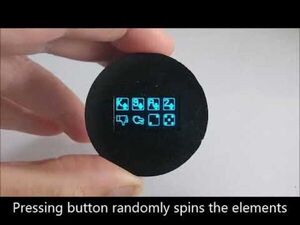
Electronic Game Buddy
"A highly configurable electronic game buddy for games such as Yahtzee, Poker, Blackjack, Rock/Paper/Scissors, Coin Toss and many more. Story Looking around for something to build, I came across a project called Fully IR Customizable Electronic Set of Eight Dices by raul7321. After analyzing many different board games, it was highly doubtful that many of the configurable faces would ever be used. So I decided to keep the general concept, drop the IR stuff and redesign the hardware and software. " [...]

Zork on ESP32 with VGA, PS2 and SD
"For thus of you who never played Zork, it’s a text based quest, came out in the early 80’s.There is no graphics, and you type in your commands. It used Z-machine instructions as the game data, there for allowing any machine with Z-interpreter to play. This project actually started 9 years ago, when I came across this post on the Arduino forum http://forum.arduino.cc/index.php?topic=100743.0The user Louis Davis did an amazing work of taking an existing Z- interpreter and make it work on an Arduino mega with SD card. The thing was, that you had to connect it to a computer and play over the serial monitor. So I made several attempts to make a standalone unit. Adding a PS2 keyboard was easy, but finding a proper output, and get it all to work together was too complicated, and I just stopped trying at some point." [...]

Raspberry Pi Pico IoT Demo - W5500 Ethernet + NeoPixel LED
"HOWTO: Let's make a simple IoT RGB control project with Raspberry Pi Pico, WIZnet W5500, NeoPixel , WIZNET5K Adafruit lib on CircuitPython. " [...]
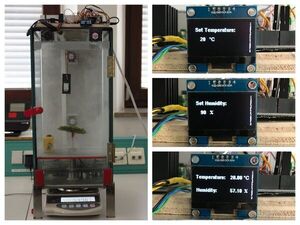
Climate Chamber System
"Control and maintain stable relative humidity and temperature states to simulate natural conditions for experimental testing in the lab. Being ecologists, we investigate organisms and their responses to natural conditions, such as variations in temperature (T) and relative humidity (RH). Sometimes it is unfavorable or simply impossible to conduct experiments on site. Additionally, it is advantageous to be able to simulate whatever conditions are desired, regardless of a right timing; as changing seasons or weather conditions might foil a plan. Also, this system could be used to pretest to know what to expect as an outcome or to validate the functionality of materials, which will be used in field. Planned experiments can be performed withoutdelay." [...]
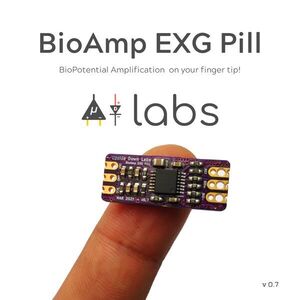
BioAmp EXG Pill
"BioPotential amplification on your finger tip! BioAmp EXG Pill is a small (2.54 X 1.00 cm) and elegant Analog Front End (AFE) board for BioPotential signal acquisition that you can use with any 5v Micro Controller Unit (MCU) with an ADC. It is capable of recording publication-quality BioPotential signals like ECG, EMG, EOG, and EEG without the inclusion of any dedicated Hardware/Software filter. BioAmp EXG Pill is very small at just 25.40 X 10.00 mm and its well-thought-out design makes it very elegant means it can be used in a variety of ways! Pin Header Holes allow you to solder header pins (berg strip) to the BioAmp EXG Pill and by doing that you can use it on BreadBoard very easily. Castellated Holes allow you to solder BioAmp EXG Pill directly onto your custom PCB to add BioPotential amplification capabilities." [...]
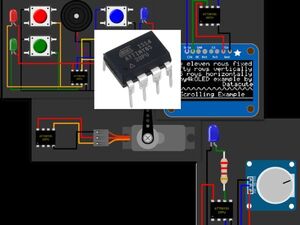
ATTiny85 Arduino programming - good collection of projects
"ATtiny85 is tiny, useful for a variety of day to day projects! Learn about ATTiny85, and Arduino projects on ATtiny85 using a free simulator" [...]
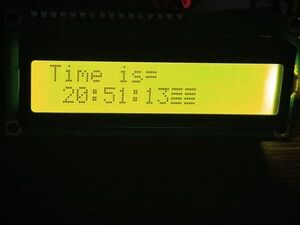
Ultimate Nodemcu clock
"Hey, guys today I made one of the best Nodemcu clock which is budget friendly it shows like corona count, time, date, yea and weather So after my previous project I worked upon it more and added 2 more features which are time using a NTP client and weather using Open weather also a live covid-19 tracking system using things speak so first for the covid tracking go to - https://www.worldometers.info/coronavirus/" [...]

Piper Make With the Raspberry Pi Pico
"Piper Make is a super easy and fun way to make projects with a Raspberry Pi Pico. It uses blocks just like Scratch so you don't need any programming experience to use it. This guide will take you through the steps of setting up your Raspberry Pi Pico for use with Piper Make and show you how to make a macro pad. Piper Make uses CircuitPython with a helper library. If you want to see how to use the Pi Pico with CircuitPython without Piper, click below: Please note that at this time, only the Raspberry Pi Pico is supported by Piper Make. At the time of writing, other RP2040 boards like the Feather RP2040 aren't directly supported." [...]

Can A $4 Raspberry PI PICO Run an AI Project?
"Today we will see what interesting project can be made by combining Pico and HUSKYLENS together Story The Raspberry Pi Pico is a radical change from the previous Pis, because it’s not a Linux computer, but a microcontroller board like Arduino. The biggest selling points of the Raspberry Pi Pico are the price, $4 and the new RP2040 chip which provides ample power for embedded projects and enables users of any age or ability to learn coding and electronics. If you have a Windows, Apple, Linux computer, or even a different Raspberry Pi, then you are already well on your way to using the Raspberry Pi Pico in your next project. Today we will see what interesting project can be made by combining Pico and HUSKYLENS together. Smart Meter Reading Project In factory renovation, we often encounter the headache of digitizing a large amount of meter data in order to realize factory informatization. Replacing them all with digital meters is of course a once-and-for-all solution, but sometimes it is not such an easy decision to make." [...]

Teaching Arduino to print telegrams
"A small project on Arduino that prints notifications coming to your phone: messages from various instant messengers, news from Twitter and everything else. Such a "telegraph apparatus" was conceived as an interesting toy without serious use, but, as it turned out, it is extremely pleasant to receive messages in the form of paper telegrams. Under the cut - a description of the operation of the device and a detailed tutorial. Briefly about how it all works Basically, the entire printing process boils down to three simple steps: X-axis movement (pulling the tape), Y-axis movement (pen movement), and the process of leaving a mark on the paper. The movement along the Y axis is performed using the P. L. Chebyshev lambda mechanism , which converts rotary motion into an approximately rectilinear one. The tape is pulled by a silicone earbud from the earbuds, rotated by a stepping motor." [...]
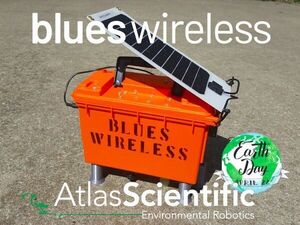
Earth Day 2021: Stream Research
"Our natural waterways are beautiful, provide recreation and support agriculture. We must ensure their health, safety and conservation! To me, it represents so much more. As a child, I grew up swimming and fishing in Flat Creek, and it holds a very special place in my heart. As my children grow up, I want to share my love of the creek and make new memories with them. Sadly, I've noticed an increase in general pollution (e.g." [...]
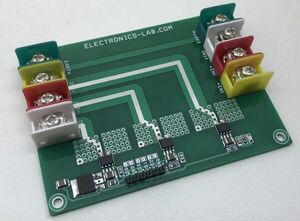
3 Phase Isolated Hall-effect Current Sense Amplifier with +/-600V Working Voltage and +/-46A Measurement Range
"The project described here is a 3-Phase isolated Hall-effect current sense amplifier with +/-600-V working voltage range. The current sensor senses magnetic flux generated from current passing through the lead frame at common-mode voltages 0 to 600V DC and provides proportional output voltage. The circuit is based on TMCS1101 IC which is a galvanically isolated Hall-effect current sensor capable of DC or AC current measurement with high accuracy, excellent linearity, temperature stability and has a bandwidth of 80KHz. A low-drift, temperature-compensated signal chain provides < 1.5% full-scale error across the device temperature range. The input current flows through an internal 1.8-mΩ conductor that generates a magnetic field measured by an integrated Hall-effect sensor. This structure eliminates external concentrators and simplifies design." [...]

Phone Thermometer Using Digispark Attiny85
"In this tutorial, we are going to build a simple OTG Phone Thermometer using Digispark ATtiny85 that can connect to our mobile phone via an OTG adaptor and read the real-time temperature of anything and display it on the serial monitor. How it works! The Digispark ATtiny85 will connect to the phone using the DigiCDC library which allows the Digispark to appear to a mobile or computer as a Virtual Serial Port when connected by USB. This makes it appear just like a standard Arduino and allows the use of the Serial Monitor. Then we read the temperature using a Precision thermistor and we use the Serial print function to print it on the serial monitor. " [...]
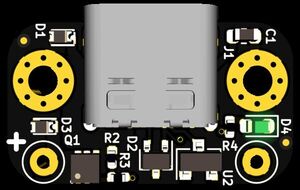
fpx: easy USB‑C power for all your devices
"My first attempt in using USB-C adapters as a power source was met with great enthusiasm. It was just a breakout board for STUSB4500 autonomous USB-PD sink controller. It has since been picked up by Sparkfun with a much better design (as you would expect). Although sufficient, I wasn’t very happy with how much effort was needed to program the chip. It required talking I2C which for me meant an Arduino had to be available, connected to a computer with USB and a whole bunch of jumper wires. I have since used Adafruit’s MCP2221A breakout board and a Raspberry Pi but the process still has a lot of friction." [...]

Pico Portal Music Box
"Plays the theme song from Portal...., for those who are "Still Alive". Features a customizable 3D print-in-place hinged box. Wanted to do a project with the Pi Pico and thought a Music Box would be a good start. Made one in 2012 following the instructions on elm-chan and using an ATTINY45. Time for an update! Effort/Level Easy/Beginner Soldering required." [...]

Battery Analyzer MkII: Alkalines
"Ever wondered if your batteries are any good? I built a tester with data logging and tested every battery I could get my hands on. It all started with a set of seemingly bad NiMh batteries and the desire to know if they really are that bad. From that point it kinda escalated. I built the Battery Analyzer and its successor the MkII and started testing NiMh batteries. When the NiMh tests entered their long and boring last phase, the long time self discharge test, I started testing Alkaline batteries." [...]
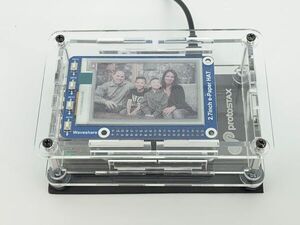
PhotoStax - Digital ePaper Photo Frame
"Display regular photographs on a tri-color ePaper Display. You can get pretty good image quality and color variation by using a method called Floyd-Steinberg dithering, even with only three colors (red, white and black) on the ePaper Display! I automated the image processing so that you can simply place regular image files in a folder, and the program automatically picks the next image to display and performs the necessary image processing required (on the fly) to render it on the ePaper Display. Here are some results! A little background on ePaper Displays I love the ePaper Display for its austere simplicity and elegance. The display persists even after the power is shutdown." [...]

Arduino Wifi iNaturalist Display
"Link an Arduino Uno Wifi Rev 2 with the iNaturalist. org API to stay updated about the species being observed in your area. Stay updated about the nature being observed near you iNaturalist is an online application in which users share observations of biodiversity in their local area. The application has over 3 million users and has been used to observe more than 320, 000 species to date. Using iNaturalist is a fantastic way to learn about nature, get involved with citizen science and keep track of the dynamic biodiversity in your area. The best way I have found to use iNaturalist is with the smart phone app which is available on android or apple." [...]

A 74XX-DEFINED RADIO
"I built a shortwave radio receiver from scratch using only cheap and easily available components, i.e. standard transistors, op-amps and 74xx logic chips. No typical radio parts – no coils, no variable capacitors, no exotic diodes. This project is easy to build and gives you a hands-on experience with radio technology which you won’t get from a fully integrated SDR. Here is the schematic. Motivation A friend of mine had an idea: He wanted to build a guitar FX pedal that is essentially a short wave radio receiver." [...]

Dual-Level Float-Cum-Boost Charger with Pre-Charge for 12V – 3 to 6Ah Sealed Lead Acid (SLA) Batteries
"This SLA Battery charger project is the right choice if you want to obtain maximum battery service life and capacity, along with acceptable recharge time and economy, constant current, constant voltage, and even charge a deeply discharged battery. The project contains all the necessary circuitry to optimally control the charging of valve-regulated lead-acid batteries. The circuit controls the charging current as well as the charging voltage to safely and efficiently charge the battery, maximizing battery capacity and life. The circuit is configured as a simple dual-voltage float-cum-boost charge controller. It is configured for charging 3 to 6Ah, 12V SLA batteries with dual-level float-cum-boost charger with pre-charge function and provides 500mA current output. The circuit also helps to charge deeply discharged batteries with pre-charge function." [...]
IoT Twitter Follower Tracker and Status Notifier
"Via Nano 33 IoT, display the follower count of a given Twitter account and its current follower status - STABLE, DEC, or INC. I have a gradually growing Twitter account for my website to showcase my projects and articles. Most of the time, I forget to check if there is a change in the follower count of my Twitter account to discern the account growth chronologically. Thus, I decided to create this apparatus placed on my desk, which displays information of my Twitter account: current follower count, current account name and ID, three preceding follower counts. First of all, to manage to glean information from Twitter by avoiding any authentification process pertaining to the Twitter API, I chose to use a content delivery network (CDN) - cdn.syndication.twimg - to obtain the number of followers of a selected Twitter account by its screen name. When I managed to get information from Twitter, I programmed a web application in PHP, named Twitter Follower Tracker, running on Raspberry Pi to print a data packet containing: the follower count, the account name, and the account ID." [...]
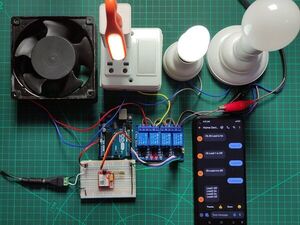
GSM based Home Appliance Control
"How to make GSM based Home Appliance Control using Arduino and GSM | GSM based Home Automation" [...]
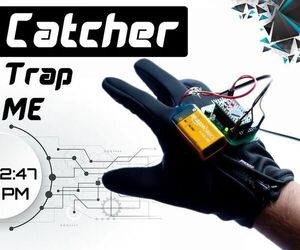
Time Catcher - Awesome LED Project Using Arduino
"In this DIY Science Project using Arduino, I am gonna show you how I made this time caching glove using just an Arduino, accelerometer, and some Led. Using this, you can make something look like its frozen in time, move backward and forward through time by simply tilting your hands. DIY Arduino Project - Creating an Illusion Here will be giving you complete details including the circuit, the PCB files if you want to make a PCB and complete the code. I will provide all the resources so that you can redesign the entire thing, customize it and then make your own version of it. This project is really cheap, very easy to make and once you have all the components it wont take more than 10 minutes to make one yourself. Supplies: - Arduino Pro Mini/Arduino Nano - Neopixel Ring - Soldering Iron" [...]
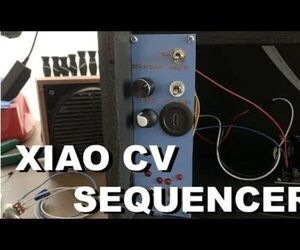
Xiao CV Sequencer
"Many modular synthesizer systems use Control Voltages (CV) to pass note information from one module to the other. When I started building my first modular VCO, I didn't have a keyboard/sequencer capable of outputting CV signals, so I cooked up this project that uses a Seeduino Xiao microcontroller and a handful of parts to make a fairly respectable CV sequencer. The code and schematics can be downloaded from my github. DISCLAIMER: Use at your own risk! In other words, before you hook this up to your fancy modular system or analog system, test it out on a multimeter, test equipment, junky module or whatever you're not worried about in case you get the magic smoke. I've tested it on a couple of my DIY oscillator modules and nothing has blown up." [...]
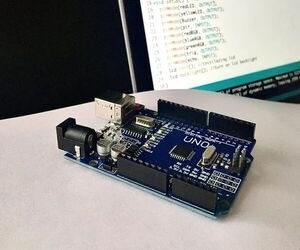
Burglar Alarm
"The TEJ2O0 engineering course is an outstanding course that teaches one many things about the computer and basic electronic circuits. One of the main highlights of this course is the Arduino Uno, specifically learning to code using it. This project demonstrates this skill and is easy to make. The Burglar Alarm is a device that alerts the user if any form of motion is detected. Further, it sounds a 'siren' if the motion or in this case the 'burglar' is within a certain distance. Else, it will notify the user that all is clear and there is no motion detected via the LCD monitor." [...]
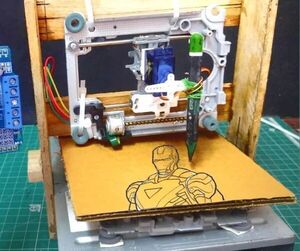
Automatic Writing Machine
"In this Instructables Segment we are going to see How to make CNC Writing Machine At Low Cost" [...]

EnderLoop
"The EnderLoop is an Ender 3 conversion mod that turns it into a conveyor belt printer. While this is similar to the CR-30, this mod costs about 1/3 of the price (including the cost of an Ender 3) which increases the accessibility of belt printing, offers more mod flexibility since the core mechanics are those of the Ender 3 which already has a plethora of mods available online, and is available right now. Also, since the support extensions are 3d printed, you can cheaply and effectively add longer support than other belt printers available. The tradeoffs are that it is a bit slower than the CR-30 and requires some DIY know-how with printers. It is currently fully functional (including firmware and slicing configuration for BlackBelt Cura) and ready for anyone who is comfortable modding their printer to use. Also happy to answer any questions." [...]

DIY | Hand Gestures Controlled Car Using Arduino | NRf24l01 | MPU6050
"Hand Gesture controlled car in like a Magic.You can easily impress your Friends and Family with it. In this video we will learn How to build the Remote car which can be Controlled using our hand Gestures. While building the car please be careful with lithium ion batteries. " [...]

Resistor Sorter
"Hii! My name is Ishaan and I am 17 years old. In this instructable, I'm going to make a Resistor sorting device. This is based on a real-life problem. Also, this project is entirely made from trash. Why do you want to Stop using multimeters since it is the tool used to check resistance?" [...]
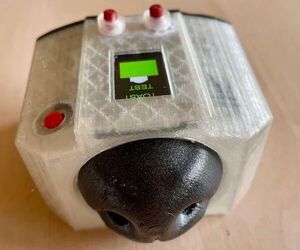
Toast Test--Simulated Testing of Indoor Spaces for COVID Spread
"COVID is spread by micro droplets that hang in the air for hours. Statistically it does not appear to be spread by surfaces so a lot of the rules that we use for keeping safe are unlikely to help--breath barriers, obsessive washing of everything. Incredible real life examples of how it is spread are now obvious in retrospect: an airplane packed with 400 spreaders of virus, not respecting distancing, half the time with their masks off, no breath barriers between seats--no one gets COVID. Why? Airplanes change out their air once every three minutes and 75% of it is from outside. You should be so lucky with your teammates for a beer after a game at the corner bar....Well now you can be with the Toast Test." [...]

Solar E-ink Weather Station
"Today i show you how i made this weather station with integrated e-ink screen. Background Two years ago I build a Wemos D1 based weather station with two DHT22 sensors and the same eink display. I need it to monitor the temperature of my turtles i keep in the garden :) One sensor measures the outside temperature and the other one measures the temperature in the greenhouse. As this is all working with mqtt so i combined it with tasmota powered sockets to automate heaters or lamps. Over this 2 years i learned a lot which i want to improve with this build - DHT sensors are good for learning / education but not for real usage - the humidity measurement is just garbage values are most of the time 99% or the sensors hang. - if the wifi connection is not possible it trys to reconnect until the battery is empty." [...]

Arduino LED Skateboard
"People all over the world play skateboard. I also enjoy skating for a long time. I made this product as my homework for computer class. This product was inspired by https://www.instructables.com/Light-Graffiti-Skate.... I did some changes while designing it. I replace the battery with a portable charger." [...]
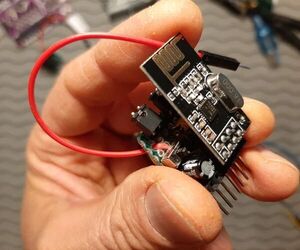
DIY Arduino Adapter for the NRF24L01
"The nRF24L01 is a common radio transceiver used with Arduino microcontrollers. They can be used for wireless communication, wireless data transfer, networks of wireless devices and remote-controlled robots. For a great tutorial on how to use them, I suggest the DroneBot Workshop tutorial (click here), which also has a YouTube video. The transceiver module uses the Serial Peripheral Interface (SPI) which is a convenient method for data transfer between electrical components wired together. There are some caveats to using the nRF24L01 transceiver however. They are powered with 3.3 volts, rather than the 5 volts that most Arduinos typically use." [...]
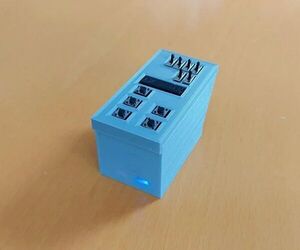
Programmable Arduino Remote Control
"With this small, palm-sized device, it is possible to remote control your PC or your Smartphone. Or to control your PC and your Smartphone at the same time. And it is freely programmable. You can write programs like: Login to your PC, open and login to instructables.com, play/pause a movie or adjust the volume on your Smartphone. How is that possible? The used micro controller board has a chip that can act as a so called HID device, which stands for Human Interaction Device and simply means keyboard or mouse." [...]
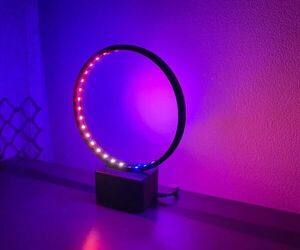
LED Ringlamp With WS2812B Led Strip
"Here I present you my self-made LED Ringlamp with WS2812B Led Strip You can find the structure in the steps. Supplies: WS2812B Led Strip SP110E Controller 3D printer power supply Soldering station" [...]
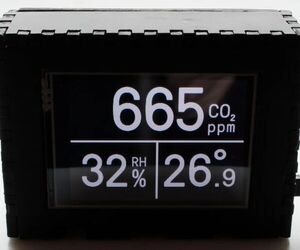
Room Weather Station
"In this crafting recipe I will show you how to make your own room meteostation (almost) from scratch. Without any 3D-printers or laser cutters! It features CO2, humidity and temperature sensors, built in web server with settings and live charts, automatic constant readings logging (every 5 seconds), color indication for low/high levels of readings and sound alarm for high CO2 level with ability to set any monotonic melody you want. As I tried to fulfill this "true DIY" philosophy of making as much as possible myself, I had to learn many new things and develop non-existent skills. I hope this instructable will motivate you to do the same! I should mention that this is actually my first Raspberry Pi project, and I had almost 0 experience with Linux OS (I only programmed on Windows so far)." [...]
Secção Videos
Videos interessantes.
That's all Folks!




